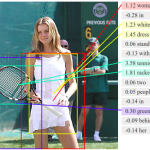From MIT Tech Review:
“(…) digital content is being divided between a lucrative high-end entertainment world, where licensors receive a negotiated fee for allowing the distribution of their property, and a low-end publishing world where content is expected to be “free,” supporting itself on often elusive advertising sales and ad splits. In this particular deal, publishers can sell ads on their articles and keep all of the revenue, or have Facebook sell ads in exchange for 30 percent.
(…) The more immediate question is about whether Facebook’s “instant articles” and other republishing initiatives are digging a deeper hole for publishers or helping them get out of the one they are already in.
(…)
When the Facebook “instant articles” deal was first proposed last fall, there was no provision at all for a financial exchange. From Facebook’s point of view, it was just a further service to users and publishers. If it hosted the Times’ content it would load faster—hence a better experience for Facebook users clicking to a shared Times story. The Times and other publishers should do this, Facebook reckoned, because it would get them greater exposure to Facebook’s vast audience. It was promotional.
After some limited pushback from the publishers, the deal now resembles a conventional digital ad split—of the kind made ubiquitous by Google AdSense. That is, if Facebook sells against this content through its networks, it splits the revenues with the publisher. If the publisher sells the ad, as though in a free-standing insert model, it keeps what it kills. (Exactly the model that has consistently lowered digital ad prices—the inevitable discounting when you have many sellers of the same space.)
(…)
But what of the New York Times? (…) This is further puzzling because the Times has built a digital subscription business of almost a million users. Why subscribe to the Times if you can read it for free on Facebook?
Of course, the subscription business will not support the Times alone (indeed, its growth appears to be seriously slowing)—it needs advertising too. Most of the advertising that pays for most of the Times’ costs still comes from the actual newspaper. That revenue stream is declining quickly, however, and is far from being replaced by digital ads, which in the first quarter of 2015 yielded only $14 million a month in revenue (15 years ago, before digital balkanized the business, the Times was averaging more than $100 million a month in ad revenue).
These measly ad dollars are in part a function of the fact that Google and Facebook together take 52 percent of all digital advertising. (…)
And now, in the prevalent view, there is simply no turning back. The math has changed. The New York Times may once have made more than $100 million a month in advertising revenue on a 1.5 million circulation base; now it makes $14 million on 50 million monthly visitors on the digital side of the business. So it will need something like 350 million users to make equivalent money—which, bizarrely, Facebook might possibly provide. Except, of course, that the more numbers go up, in digital math, the more their value goes down. But pay no attention.” read full article
























